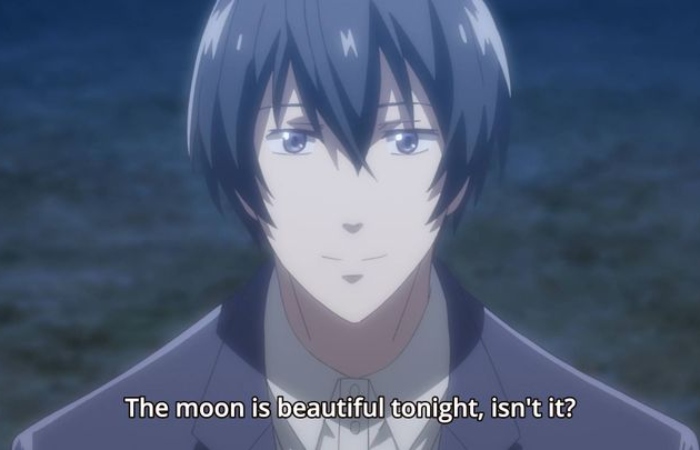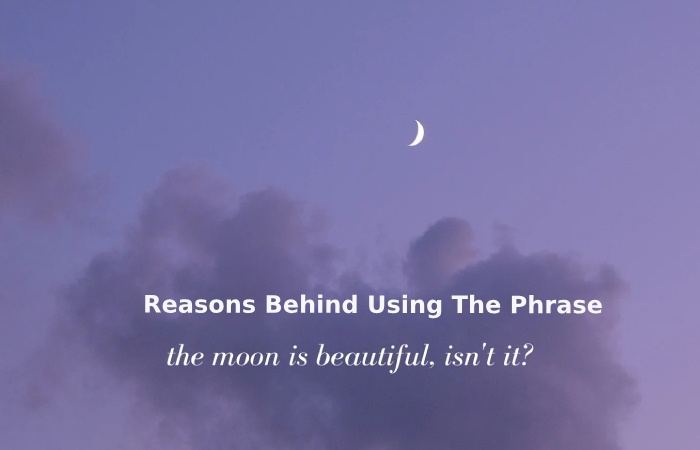In this article, we are going discuss the Japanese phrase “The Moon Is Beautiful, Isn’t It” (美しいですね月, Utsukushii desu ne tsuki). It looks like poetry, which makes you especially appreciate the moon’s appearance. And by other references, we learned it is another innocent observation transcending its literal meaning, blossoming into a profound way of saying, “I love you.” In romance and subtle declarations, the Japanese language unfolds like a delicate cherry blossom, revealing layers of meaning beneath its poetic surface.
Table of Contents
Where Did This Phrase Come From?

To recognize the deepness of this phrase, one must delve into the cultural reverence the Japanese hold for the moon. Throughout history, the moon has been a symbol of beauty, purity, and transience in Japanese art, poetry, and folklore. Its phases mirror the impermanence of life, and its glow fascinates the imagination. Thus, when one says, “The moon is beautiful, isn’t it?” it is not just an observation of the night sky; it is an acknowledgment of communal appreciation for the timeless attraction of the moon.
In Japan, expressions of love are often steeped in cultural subtleties and traditions. The directness of an English “I love you” can be considered somewhat overwhelming or uncomfortable in the Japanese context. The phrase “Tsuki ga Kirei desu ne” delicately navigates the nuanced terrain of Japanese communication, expressing deep affection without overwhelming the listener. It is a linguistic dance, a delicate ballet of words that invites the recipient to partake in the shared beauty of the moonlit moment.
The Art of Indirection:
Indirection is an art form in Japanese communication, and the phrase “The moon is beautiful, isn’t it?” exemplifies this beautifully. Rather than stating affection outright, it invites the other person to observe the moon’s beauty. The moon becomes a metaphor, a silent witness to the unspoken emotions between two individuals. This indirect approach adds layers of meaning and intimacy, creating a space for vulnerability and shared sentiment.
Shared Experiences Under the Moon:

In Japanese culture, the moon is not merely an astronomical entity but a shared experience. Couples often take moonlit strolls, enjoying the serene glow and quiet beauty that the night sky bestows upon them. Using the moon as a focal point, the phrase becomes a bridge connecting the personal and the cosmic. It transforms a simple statement into a shared observation, a moment suspended in time where two souls find common ground beneath the celestial canvas.
The Power of Silence:
Within the Japanese aesthetic, silence carries profound meaning. “The Moon is beautiful, isn’t it?” allows for a moment of shared silence, a pause in the conversation where emotions can resonate. It is within this stillness that the depth of feeling is understood. The unspoken words hang in the air, allowing the listener to absorb the sentiment without explicit verbalization.
Evoking Nature’s Beauty:

Japanese poetry often draws inspiration from nature, and this phrase seamlessly integrates the beauty of the moon into the expression of love. It aligns the emotions between two individuals with the eternal rhythms of the cosmos. With its cyclical phases, the moon becomes a metaphor for the enduring nature of love, waxing and waning but ever-present in its beauty.
We’re not just talking about the moon when we use these words. We’re also taking a moment to connect with the people around us who might be enjoying the same view. It’s like a friendly nod to the beauty we all see in the sky.
Consider it a little pause in our busy lives to enjoy nature’s artwork. It’s a way for us to say, “Hey, let’s all admire the moon together!” So, the next time you see the moon shining above, remember that saying, “The moon is beautiful, isn’t it?” is like giving a thumbs-up to the nighttime beauty we all share.
Reasons Behind Using The Phrase “The moon is beautiful, isn’t it?”

- Shared Awe and Connection: The phrase serves as a way to express a collective sense of wonder and admiration for the moon’s beauty. People can instantly connect over a shared appreciation for the natural world by uttering these words.
- Poetic Expression: In several cultures, including Japanese, poetry is a precious art form. “The Moon Is Beautiful, Isn’t It?” embodies poetic sentiment, allowing individuals to engage in a brief moment of artistic expression during everyday conversations.
- Cultural Tradition: The phrase is deeply built in Japanese culture, often appearing in literature, poetry, and conversations. It’s a nod to tradition and an acknowledgment of the cultural significance of the moon.
- Appreciation of Nature: This phrase highlights the human desire to connect with nature’s beauty. It’s a simple way to remind ourselves and others of the extraordinary beauty surrounding us.
- Emotional Resonance: The moon symbolizes emotions, love, and longing in literature and art. This phrase can evoke feelings of nostalgia, romanticism, or introspection.
- Unity and Bonding: Sharing the sentiment that the moon is beautiful fosters a sense of unity among individuals. It’s a shared experience that transcends language and cultural barriers.
- Simplicity and Universality: The phrase’s simplicity makes it accessible and relatable to people from all walks of life. It’s a reminder that beauty can be found in life’s uncomplicated and ordinary aspects.
- Cultural Exchange: When used in conversations, usually in cultures, this phrase can serve as a bridge for cultural exchange and understanding. Allowing individuals to learn and appreciate different perspectives on beauty and nature.
Conclusion:
“The moon is beautiful, isn’t it?” emerges as a poetic masterpiece in the lexicon of Japanese expressions of love and nature’s beauty. Beyond its literal translation, it encapsulates a profound acknowledgment of shared beauty, a delicate invitation to appreciate the enchantment of the moonlit night together. In a culture that values subtlety and connection with nature, this phrase transcends language boundaries, serving as a timeless testament to the exquisite dance between words and emotions in the realm of love.

